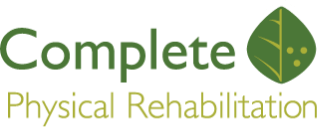Are You Looking to Improve the Results of Your Surgery? “Prehab” PT Can Help
Practicing with a physical therapist before your operation– sometimes referred to as “prehab,” — can help you mentally and physically prepare your body for the stress of undergoing a major surgery, and is a very wise decision for your health.
Most people know that physical therapy is commonly used as a tool for rehabilitation after surgery or major strain to the body. You might be surprised to learn that studies also show that prehab programs have successfully reduced post-operative recovery time across a wide range of patients, and that patients report less anxiety towards their upcoming procedures when they have participated in a prehab program.
If you are undergoing surgery in the near future, contact us to learn more about how physical therapy can help you prepare and recover.
The differences between pre- and post-surgical rehab
You are likely already familiar with rehabilitation after surgery, or post-surgical rehab. This process assists your body at a time where you have just lost a lot of strength, and need specialized attention to help you regain your function.
Post-surgical rehab offers specific exercises and stretches that promote pain-relief, improve strength, and restore optimum function in the affected area(s) of your body. Besides this approach, additional treatments in post-surgical rehab include manual therapy, ice and heat therapies, ultrasound, and electrical stimulation modalities.
Pre-surgical rehabilitation is different. In prehab, you practice stretches and exercises before surgery in order to prepare your body for the procedure ahead and, according to the National Institutes of Health, significantly improve postoperative results and shorten your recovery time.
It’s no secret that surgery is hard on the body, but strengthening stretches and exercises before the procedure can help you achieve better results. Prehab can also help you mentally prepare for surgery, and lessen any anxiety you may experience through the knowledge that you did everything you could to make the process as painless for yourself as possible.
Rehab therapy treatments
Did you know that you can begin working with a physical therapist very soon after your surgery — even on the same day? After your surgery, a physical therapist can reteach you the proper way to get in and out of bed, use mobility assistance devices, and complete everyday activities like getting dressed and using the restroom.
As time goes on, post-surgical PT will further help you with your recovery and guide you through your return to normal life. A physical therapy exercise program is designed to help you progressively regain strength while avoiding tearing stitches or reinjuring yourself.
In physical therapy, you will have access to many different kinds of rehabilitation techniques, modeled by trained professionals whose number one goal is to help you recover from an injury or surgery.
You’ll likely begin post-surgical rehab by completing safe and non-intimidating exercises, like water-based training sessions in a pool, that reduce the strain on your recovering muscles. Our physical therapists can also help you perform assisted exercises, which aid you in moving your limbs properly to contract muscles — without the risk of straining or reinjuring anything.
Prehab therapy treatments
Though surgery is a necessity for many people and ultimately leads to an improvement in your health and wellness, it can still be very intimidating to undergo. The idea of being placed under anesthetic and operated on can seem foreign, strange, and downright scary. However, working with a physical therapist before your operation can ease these anxieties and help you develop a solid plan for your recovery.
Working with a physical therapist before surgery better prepares you for adjustments you will have to make after your procedure. For example, your therapist can help you prepare to drive, navigate the inside of your home, return to work, and develop a post-operative exercise regimen that won’t harm your recovery. You may also be recommended assistive devices, like a cane or walker, to use after your surgery.
One aspect of prehab can involve preparing a “recovery zone” in your home. For example, if your bedroom is on the second floor of your home, you might want to set up a temporary bedroom or sleeping area on the first floor, to avoid frequent stair use while in recovery.
Commonly used kitchen items should also be placed in easily accessible areas ahead of time. Though physical therapy will be an important part of your recovery, it is equally important to rest, and protect yourself from unnecessary strain. Prepare an area of your home where you can comfortably sit, rest and relax after your surgery.
Exercise will also be a part of your prehab physical therapy strategy. Strength training, flexibility stretching, and cardiovascular activity to promote oxygen flow are all movements that will help you heal faster after surgery. Being reasonably fit prior to surgery may even eliminate the need for inpatient physical therapy rehabilitation.
Get started today; your body will thank you!
If the date of your surgery is approaching and you like the sound of improving postoperative results and shortening recovery time through physical therapy, contact Complete Physical Therapy and Rehab today and schedule an appointment today.
Sources:

Dr. James Pumarada is a licensed Physical Therapist and co-owner of Complete Physical Rehabilitation. With over 20+ years of treatment experience, he is a Sports Therapy Certified physical therapist, focusing on treating and training runners of all levels, and is one of the most sought after vestibular therapy specialists in Elizabeth and Jersey City where, along with his wife, Dr. Asha, they specialize in the treatment of all dizziness, vertigo, and imbalance issues.

